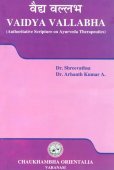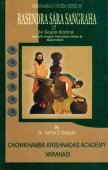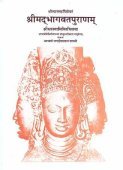Ayu, Āyu: 20 definitions
Introduction:
Ayu means something in Hinduism, Sanskrit, Jainism, Prakrit, Buddhism, Pali, Marathi, Hindi, biology, Tamil. If you want to know the exact meaning, history, etymology or English translation of this term then check out the descriptions on this page. Add your comment or reference to a book if you want to contribute to this summary article.
Alternative spellings of this word include Aayu.
In Hinduism
Purana and Itihasa (epic history)
Source: Wisdom Library: Bhagavata PuranaĀyu (आयु):—One of the six sons of Purūravā (son of Budha) by the womb of Urvaśī. His sons were called Nahuṣa, Kṣatravṛddha, Rajī, Rābha and Anenā. (see Bhāgavata Purāṇa 9.15.1, 9.17.1-3)
Source: Cologne Digital Sanskrit Dictionaries: The Purana Index1a) Āyu (आयु).—A son of Prāṇa and Ūrjasvatī: a Vasu;1 Father of Vaitaṇḍya and others.2
1b) The son of Puruhotra, and father of Sātvata.*
- * Bhāgavata-purāṇa IX. 24. 6.
1c) One of the six sons of Purūravas and Urvaśī; wife Prabhā, Rāhu's daughter; father of five sons, Nahuṣa, Vṛddhaśarman, Rāju, Dambha, and Vipāpman, all of them expert warriors.*
- * Bhāgavata-purāṇa IX. 15. 1; 17. 1; Brahmāṇḍa-purāṇa III. 66. 22, 90; 67. 1; Matsya-purāṇa 24. 33-5; Vāyu-purāṇa 91. 51; Viṣṇu-purāṇa IV. 6. 73; 7. 1; 8. 1-3.
1d) A son of Kṛṣṇa and Bhadrā.*
- * Bhāgavata-purāṇa X. 61. 17.
1e) The sage presiding over the month of puṣya.*
- * Bhāgavata-purāṇa XII. 11. 42.
1f) (Śuci Agni). Father of Mahiṣa.*
- * Brahmāṇḍa-purāṇa II. 12. 38-40.
1g) A carakādhvaryu.*
- * Brahmāṇḍa-purāṇa II. 33. 13.
1h) The Agni that lives in paśu.*
- * Vāyu-purāṇa 29. 37.
1i) A son of Aṅgirasa; father of Amāvasu.*
- * Vāyu-purāṇa 65. 105; 73. 5.
Āyu (आयु) is a name mentioned in the Mahābhārata (cf. I.90.7) and represents one of the many proper names used for people and places. Note: The Mahābhārata (mentioning Āyu) is a Sanskrit epic poem consisting of 100,000 ślokas (metrical verses) and is over 2000 years old.
Source: Shodhganga: The saurapurana - a critical studyĀyu (आयु) or Āyus is one of the six sons of Aila Purūravas, according to the Vaṃśānucarita section of the 10th century Saurapurāṇa: one of the various Upapurāṇas depicting Śaivism.—Accordingly, [...] Aila Purūravas, the most illustrious pious king gets married to Urvaśī, the heavenly damsel who is cursed by Brahmā to spend sometime here on earth. Purūravas begets on her six sons—Āyu, Mayu, Amāyu, Viśvāyu, Śatāyu and Śrutāyu. All these are celebrated like Semi-divine beings (devayonaya). Āyu got married to the daughter of Svarbhānu and became the father of five sons who were quite famous and well known. Nahuṣa was the eldest of them.

The Purana (पुराण, purāṇas) refers to Sanskrit literature preserving ancient India’s vast cultural history, including historical legends, religious ceremonies, various arts and sciences. The eighteen mahapuranas total over 400,000 shlokas (metrical couplets) and date to at least several centuries BCE.
Ayurveda (science of life)
Source: gurumukhi.ru: Ayurveda glossary of termsĀyu (आयु):—1. span of life , 2. continious combination of sattva, atma, sharira, indriya

Āyurveda (आयुर्वेद, ayurveda) is a branch of Indian science dealing with medicine, herbalism, taxology, anatomy, surgery, alchemy and related topics. Traditional practice of Āyurveda in ancient India dates back to at least the first millenium BC. Literature is commonly written in Sanskrit using various poetic metres.
In Jainism
General definition (in Jainism)
Source: Encyclopedia of Jainism: Tattvartha Sutra 8: Bondage of karmasĀyu (आयु) refers to “lifespan determining (karmas)” and represents one of the eight types of Prakṛti-bandha (species bondage): one of the four kinds of bondage (bandha) according to the 2nd-century Tattvārthasūtra chapter 8.—Accordingly, “what is meant by lifespan determining karma (āyu)? The karmas which give the living body existence in the four destinies (hell, heaven, human and sub human) are called lifespan determining karma”.
There are of four different types of life determining (āyu) karma:
- heavenly/celestial realms or states of existence (deva or devāyu),
- infernal /hellish realms or states of existence (naraka or nārakāyu),
- human realms or states of existence (manuṣya or manuṣyāyu),
- sub-human realms or states of existence (animal and plant) (tiryañca or tiryañcāyu).
Out of the four realms which destinies are the auspicious and/or inauspicious? The three realms i.e. heavenly, human and sub-human are auspicious and the heavenly realm is inauspicious.

Jainism is an Indian religion of Dharma whose doctrine revolves around harmlessness (ahimsa) towards every living being. The two major branches (Digambara and Svetambara) of Jainism stimulate self-control (or, shramana, ‘self-reliance’) and spiritual development through a path of peace for the soul to progess to the ultimate goal.
Biology (plants and animals)
Source: Google Books: CRC World Dictionary (Regional names)Ayu in Yoruba is the name of a plant defined with Allium sativum in various botanical sources. This page contains potential references in Ayurveda, modern medicine, and other folk traditions or local practices It has the synonym Porrum ophioscorodon Rchb. (among others).
Example references for further research on medicinal uses or toxicity (see latin names for full list):
· Gardeners Dictionary, ed. 8
· Species Plantarum (1753)
If you are looking for specific details regarding Ayu, for example side effects, extract dosage, diet and recipes, chemical composition, pregnancy safety, health benefits, have a look at these references.

This sections includes definitions from the five kingdoms of living things: Animals, Plants, Fungi, Protists and Monera. It will include both the official binomial nomenclature (scientific names usually in Latin) as well as regional spellings and variants.
Languages of India and abroad
Pali-English dictionary
Source: BuddhaSasana: Concise Pali-English Dictionaryāyu : (nt.) age.
Source: Sutta: The Pali Text Society's Pali-English DictionaryĀyu, (nt.) (Vedic āyus; Av. āyu, gradation form of same root as Gr. ai)w/n “aeon”, ai)έn always; Lat. aevum, Goth. aiws. Ohg. ēwa, io always; Ger. ewig eternal; Ags. āē eternity, ā always (cp. ever and aye)) life, vitality, duration of life, longevity D. III, 68, 69, 73, 77; S. III, 143 (usmā ca); IV, 294; A. I, 155; II, 63, 66 (addh°); III, 47; IV, 76, 139; Sn. 694, 1019; It. 89; J. I, 197 (dīgh°); Vv 555 (cp. VvA. 247 with its definition of divine life as comprising 30 600 000 years); Vism. 229 (length of man’s āyu = 100 years); Dhs. 19, 82, 295, 644, 716; Sdhp. 234, 239, 258.—Long or divine life, dibbaṃ āyu is one of the 10 attributes of ādhipateyya or majesty (see ṭhāna), thus at Vin. I, 294; D. III, 146; S. IV, 275 sq. ; A. I, 115; III, 33; IV, 242, 396; Pv. II, 959 (= jīvitaṃ PvA. 136).

Pali is the language of the Tipiṭaka, which is the sacred canon of Theravāda Buddhism and contains much of the Buddha’s speech. Closeley related to Sanskrit, both languages are used interchangeably between religions.
Marathi-English dictionary
Source: DDSA: The Molesworth Marathi and English Dictionaryāyu (आयु).—n S The term or period of life, life-time.
Source: DDSA: The Aryabhusan school dictionary, Marathi-Englishāyu (आयु).—n Life-time.
Marathi is an Indo-European language having over 70 million native speakers people in (predominantly) Maharashtra India. Marathi, like many other Indo-Aryan languages, evolved from early forms of Prakrit, which itself is a subset of Sanskrit, one of the most ancient languages of the world.
Sanskrit dictionary
Source: DDSA: The practical Sanskrit-English dictionaryĀyu (आयु).—a. [i-ṭhaṇ Uṇādi-sūtra 1.2] Ved. Living, going, movable.
-yuḥ 1 A living being, man.
2) Mankind, human race.
3) Living beings taken collectively.
4) The first man.
5) Life, duration of life.
6) Wind, अहं केशरिणः क्षेत्रे वायुना जगदायुना (ahaṃ keśariṇaḥ kṣetre vāyunā jagadāyunā) Mb.
7) A son, descendant, offspring.
8) The son of Purūravas and Urvaśī.
Source: Cologne Digital Sanskrit Dictionaries: Shabda-Sagara Sanskrit-English DictionaryĀyu (आयु).—mn. (-yuḥ-yu) Age, duration of life. E. ay to go, Unadi affix ḍu.
Source: Cologne Digital Sanskrit Dictionaries: Cappeller Sanskrit-English DictionaryĀyu (आयु).—1. [adjective] living, lively, active; [masculine] living creature, man, mankind.
--- OR ---
Āyu (आयु).—2. [masculine] the genius of life; [neuter] life.
--- OR ---
Āyu (आयु).—draw onwards or towards, seize, occupy, get, procure, mix, mingle.
Āyu is a Sanskrit compound consisting of the terms ā and yu (यु).
Source: Cologne Digital Sanskrit Dictionaries: Monier-Williams Sanskrit-English Dictionary1) Āyu (आयु):—[=ā-yu] 1. ā-√2. yu [Ātmanepada] (ā-yuvate, [Ṛg-veda ix, 77, 2]; [perfect tense] -yuyuve, [Ṛg-veda i, 138, 1]; p. -yuvamāna, [Ṛg-veda i, 582, and] -yuvāna, [Śatapatha-brāhmaṇa ix, 4, 1, 8])
—to draw or pull towards one’s self;
—to seize, take possession of [Ṛg-veda; Taittirīya-brāhmaṇa; Śatapatha-brāhmaṇa];
—to procure, provide, produce, [Taittirīya-saṃhitā];
—to stir up, agitate, mingle, [Mānava-śrauta-sūtra] and, [Mānava-gṛhya-sūtra] :
—[Intensive] (p. -yoyuvāna, [Ṛg-veda iv, 1, 11]) to meddle with.
2) 2. āyu mfn. ([from] √i, [Uṇādi-sūtra i, 2]), living, movable, [Ṛg-veda; Vājasaneyi-saṃhitā]
3) m. a living being, man
4) living beings collectively, mankind, [Ṛg-veda]
5) son, descendant, offspring
6) family, lineage, [Ṛg-veda]
7) a divine personification presiding over life, [Ṛg-veda x, 17, 4]
8) Name of fire (as the son of Purūravas and Urvaśī), [Vājasaneyi-saṃhitā; Mahābhārata; Harivaṃśa] (cf. āyus)
9) Name of a man persecuted by Indra, [Ṛg-veda]
10) Name of several other men, [Mahābhārata; Harivaṃśa] etc.
11) Name of a king of frogs, [Mahābhārata]
12) n. ([and (us) m., [cf. Lexicographers, esp. such as amarasiṃha, halāyudha, hemacandra, etc.]]) life, duration of life, [Ṛg-veda iii, 3, 7; ix, 100, 1.]
Source: Cologne Digital Sanskrit Dictionaries: Yates Sanskrit-English DictionaryĀyu (आयु):—[(yuḥ-yu)] 1. m. n. Age.
[Sanskrit to German]
Sanskrit, also spelled संस्कृतम् (saṃskṛtam), is an ancient language of India commonly seen as the grandmother of the Indo-European language family (even English!). Closely allied with Prakrit and Pali, Sanskrit is more exhaustive in both grammar and terms and has the most extensive collection of literature in the world, greatly surpassing its sister-languages Greek and Latin.
Hindi dictionary
Source: DDSA: A practical Hindi-English dictionaryĀyu (आयु) [Also spelled aayu]:—(nf) age.
...
Kannada-English dictionary
Source: Alar: Kannada-English corpusĀyu (ಆಯು):—
1) [verb] to collect, gather or amass.
2) [verb] to pick out by preference from what is available; to take as a choice; to select; to choose.
3) [verb] to sort or separate from a lot.
4) [verb] ಆಯ್ದುಕೊಂಡು ತಿನ್ನು [aydukomdu tinnu] āydukoṇḍu tinnu (fig.) to live by gleaning, hence, to be very poor.
--- OR ---
Āyu (ಆಯು):—[noun] the duration of time from one’s birth to his or her death; life-time.
Kannada is a Dravidian language (as opposed to the Indo-European language family) mainly spoken in the southwestern region of India.
See also (Relevant definitions)
Starts with (+341): Aayudh, Ayu Sutta, Ayu-kalpa, Ayubowa, Ayucakan, Ayucu, Ayucuvirutti, Ayuddha, Ayuddhasena, Ayuddhavi, Ayuddhvi, Ayudh, Ayudha, Ayudhabhrit, Ayudhadhari, Ayudhadharini, Ayudhadharmini, Ayudhadharmmini, Ayudhadhyaksha, Ayudhagar.
Ends with (+375): Aayu, Abayu, Abhyayu, Achyutayu, Acyutayu, Adabdhayu, Addayu, Addhayu, Adevayu, Adhijarayu, Adhovayu, Adhvarayu, Aduruvayu, Advayu, Aghayu, Agnivayu, Ahitayu, Aiccikasnayu, Ajamayu, Ajarayu.
Full-text (+405): Ayus, Ayusha, Ayuhshesha, Ayushtoma, Nahusa, Shatayus, Ayushka, Ayuhstoma, Ayuhsheshata, Purushayus, Ayuhpati, Ayustejas, Ayur, Jatayu, Ayushkara, Ayurvedamaya, Svayus, Ayunul, Kanakayu, Ayushkrit.
Relevant text
Search found 93 books and stories containing Ayu, Āyu, A-yu, Ā-yu; (plurals include: Ayus, Āyus, yus). You can also click to the full overview containing English textual excerpts. Below are direct links for the most relevant articles:
Rig Veda (translation and commentary) (by H. H. Wilson)
Tattvartha Sutra (with commentary) (by Vijay K. Jain)
Verse 8.10 - The four kinds of fe-determining karma (āyus) < [Chapter 8 - Bondage of Karmas]
Verse 8.17 - The maximum duration of life-determining karma (āyus) < [Chapter 8 - Bondage of Karmas]
Verse 2.53 - The lifetime of beings < [Chapter 2 - Category of the Living]
The Agni Purana (by N. Gangadharan)
Chapter 274 - Description of the Lunar race (somavaṃśa)
Chapter 357 - Adding primary affixes known as uṇādi
Satapatha-brahmana (by Julius Eggeling)
Additions and Corrections to volume 2 (kāṇḍa 3-4) < [Additions and Corrections]
Kāṇḍa XII, adhyāya 2, brāhmaṇa 3 < [Twelfth Kāṇḍa]
Kāṇḍa VII, adhyāya 2, brāhmaṇa 1 < [Seventh Kāṇḍa]
Atharvaveda and Charaka Samhita (by Laxmi Maji)
Introduction to Āyurveda < [Chapter 1 - Introduction]
Maṇis (medical amulets) in the Atharva Veda < [Chapter 3 - Diseases and Remedial measures (described in Atharvaveda)]
Natural Treatment in the Vedas < [Chapter 2 - The nature of treatment for diseases in the Ancient era]
The Brahmanda Purana (by G.V. Tagare)
Chapter 2 - The Legend of Naimiṣāraṇya < [Section 1 - Prakriyā-pāda (section on rites)]
Chapter 12 - The race of Agni < [Section 2 - Anuṣaṅga-pāda]
Chapter 67 - The origin of Dhanvantari < [Section 3 - Upodghāta-pāda]
Related products




